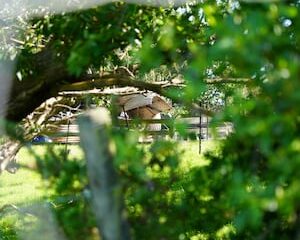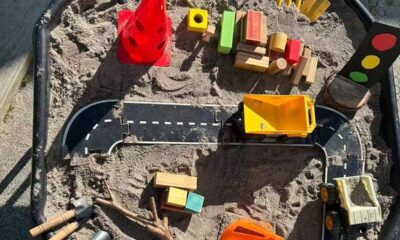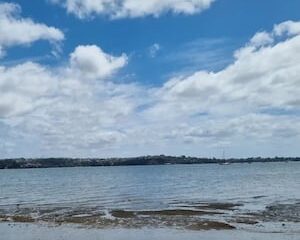Science
Laser Research Project Launches to Study Aerosols in New Zealand

A new atmospheric research project, goSouth-2, has officially launched at the MetService site near Invercargill Airport. The initiative aims to gather critical data on how aerosols—tiny airborne particles—affect the atmosphere. This collaborative effort brings together institutions from Germany and New Zealand, with partners including the Meteorological Institute of the University of Leipzig and the Leibniz Institute for Tropospheric Research (TROPOS).
On September 3, 2023, researchers will commence their work at the site with five staff members from TROPOS setting up essential equipment. According to Patric Seifert, a researcher at TROPOS, aerosols originate from various sources both on land and at sea, including salt, dust, pollen, smoke, and volcanic activity. These particles play a vital role in cloud formation by acting as nuclei for cloud droplets.
Dr. Seifert emphasized the significance of the research location. The southern tip of New Zealand, situated at the northern edge of the Southern Ocean, provides a unique environment for studying aerosol-cloud interactions. The atmosphere in this region can be exceptionally clean when air masses flow in from Antarctica. Conversely, when continental air masses arrive from Australia, the aerosol content dramatically changes. By examining these differences, researchers aim to enhance their understanding of how cloud formation responds to varying aerosol levels.
Addressing Global Atmospheric Models
Current atmospheric and climate models struggle to accurately simulate clouds over the Southern Ocean compared to the northern hemisphere. Dr. Seifert noted that the disparity in aerosol levels between the two hemispheres might account for this discrepancy. More extensive data has been collected regarding the northern hemisphere, which generally experiences higher pollution levels.
Invercargill was selected for this research project not only for its unique atmospheric conditions but also for the logistical support available for operating the equipment and housing research staff. The MetService has been conducting significant long-term observations at the site, including weather balloon soundings, precipitation monitoring, and measurements of solar and thermal radiation.
The research will employ a variety of instruments, including lidar (light detection and ranging) systems that emit laser pulses to investigate aerosol content. Residents near Invercargill Airport may notice a distinct green laser beam in the sky, which has been communicated to airport personnel. Additionally, radar systems will be utilized to study cloud formations and precipitation patterns.
Long-Term Data Analysis and Future Research
The TROPOS team will remain on-site for a duration of 18 months, while a group of approximately 15 researchers in Germany will analyze the collected data. This project builds on the foundation laid by the previous goSouth-1 study, which took place in 2022 near Pahia, about 50 kilometers from Invercargill. That month-long study utilized less equipment but provided valuable insights into aerosol behavior.
As the goSouth-2 project unfolds, its findings are expected to contribute significantly to the global understanding of atmospheric science, particularly in the context of cloud formation and aerosol interactions. The research offers the potential for improved climate models and better predictions regarding weather phenomena in the Southern Hemisphere.
-

 World1 week ago
World1 week agoPrivate Funeral Held for Dean Field and His Three Children
-

 Top Stories2 weeks ago
Top Stories2 weeks agoFuneral Planned for Field Siblings After Tragic House Fire
-

 Sports3 months ago
Sports3 months agoNetball New Zealand Stands Down Dame Noeline Taurua for Series
-

 Entertainment3 months ago
Entertainment3 months agoTributes Pour In for Lachlan Rofe, Reality Star, Dead at 47
-

 Entertainment2 months ago
Entertainment2 months agoNew ‘Maverick’ Chaser Joins Beat the Chasers Season Finale
-

 Sports3 months ago
Sports3 months agoSilver Ferns Legend Laura Langman Criticizes Team’s Attitude
-

 Sports4 weeks ago
Sports4 weeks agoEli Katoa Rushed to Hospital After Sideline Incident During Match
-

 World2 weeks ago
World2 weeks agoInvestigation Underway in Tragic Sanson House Fire Involving Family
-

 Politics2 months ago
Politics2 months agoNetball NZ Calls for Respect Amid Dame Taurua’s Standoff
-

 Top Stories2 weeks ago
Top Stories2 weeks agoShock and Grief Follow Tragic Family Deaths in New Zealand
-

 Entertainment3 months ago
Entertainment3 months agoKhloe Kardashian Embraces Innovative Stem Cell Therapy in Mexico
-

 World4 months ago
World4 months agoPolice Arrest Multiple Individuals During Funeral for Zain Taikato-Fox




















